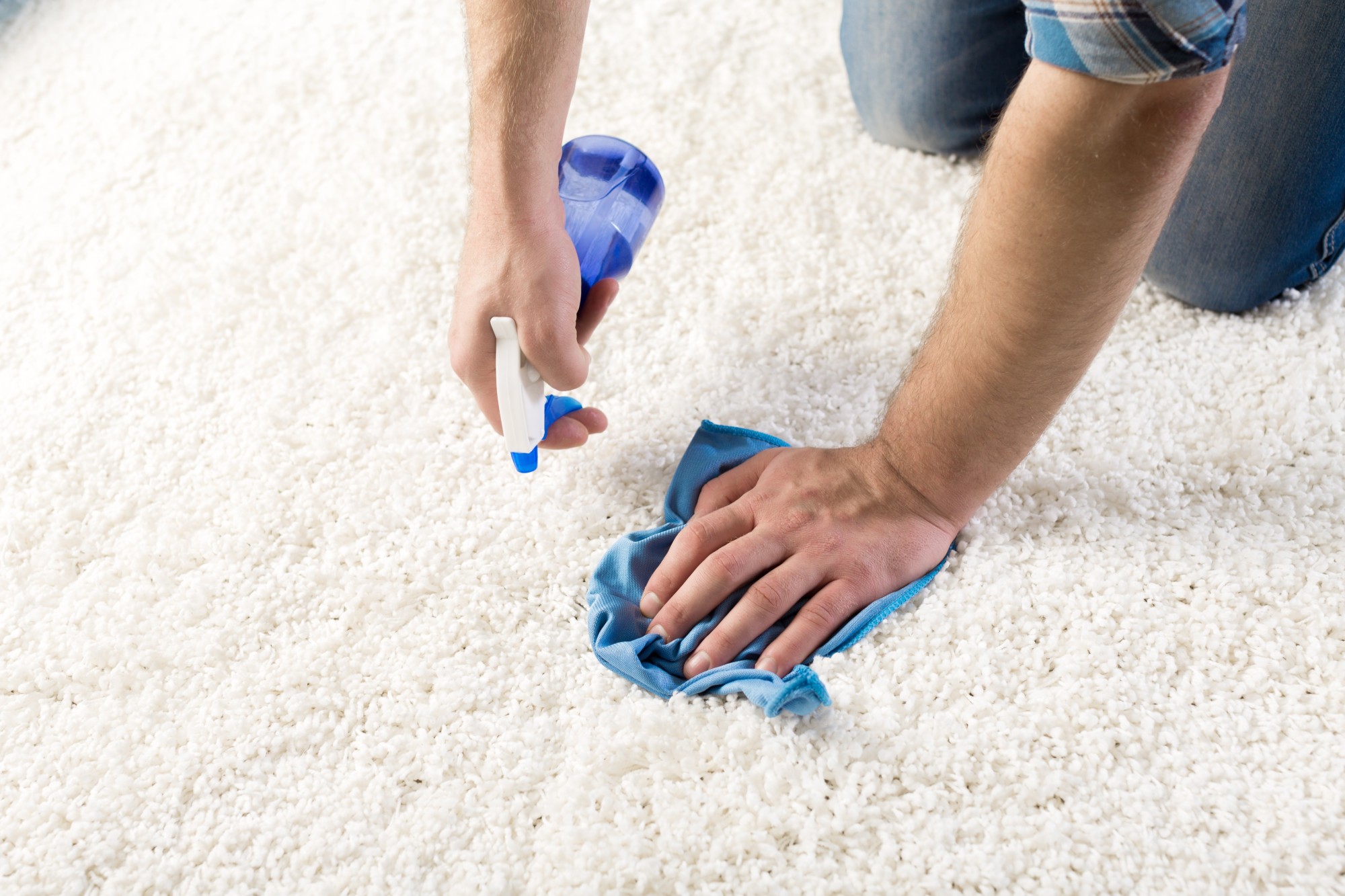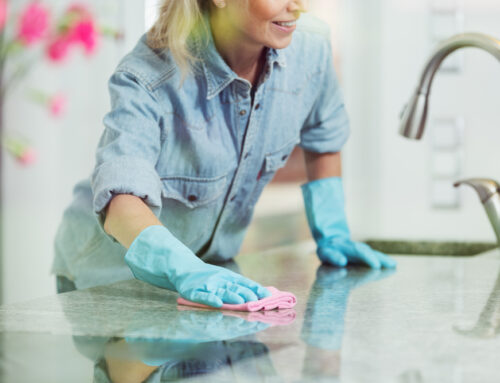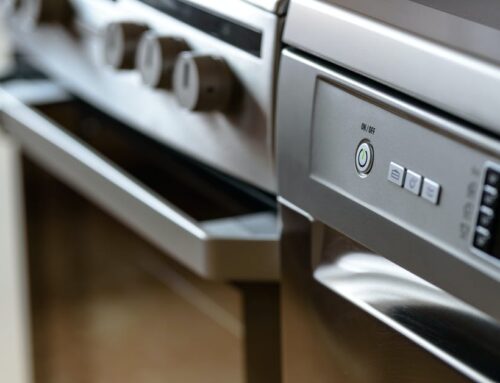Prior studies suggested that having a pet may help improve stress and blood pressure. However, a new study now says that having a long-term pet may even help slow cognitive decline in adults!
That’s more reason to love your furry or multi-legged pals, even if they create a mess here and there.
Besides, removing pet stains isn’t impossible, even if it’s not a pleasant job. Be quick yet careful, though, as pet waste can harbor millions of fecal coliform bacteria. Some are pathogenic germs, causing disease in humans and other animals.
Still, don’t worry that much, as we’re here to guide you on proper and safe pet stain removal. So, read on because the sooner you finish, the sooner you can address those nasty, smelly markings.
Gear Up
Just as you wear gloves when picking up fresh poop, do the same when cleaning pet stains, even if they look dry. One reason is that some germs in pet excrement can survive outside the living body.
One example is Leptospira, the bacteria that cause leptospirosis. They can survive in moist conditions for weeks or months. The good news is that drying inactivates them.
Wear old clothes, as well, to avoid damaging expensive shirts or pants while you remove pet stains.
Lastly, don a face mask and goggles before applying or spraying cleaning solutions. They can protect your eyes and skin from accidental splashes. They also help prevent you from inhaling particles and aerosols.
Remove the Source
If you’re dealing with fresh poop, pick it up first and transfer it to a trash bag. If it’s vomit, try sweeping the goo and solids off in one go, but make sure you don’t apply too much pressure. Otherwise, some particles may disintegrate and embed into the soiled surface.
Blot Fresh or Still-Damp Stains
Spread a thick layer of paper towels over fresh stains. Next, cover with a wad of old newspaper, and if possible, place some under the soiled spot. Then, apply pressure on that area; for instance, you can stand on it for about a minute or two.
Take the layers off and inspect the stained spot. If it’s still damp, repeat the process until it looks almost dry.
Next, rinse the soiled area with small amounts of clean, cool water. You can also use a spray bottle to prevent spillage. Finally, be sure to alternate between rinsing and blotting.
Apply Baking Soda
Baking soda, the fine powdery stuff added to baked goods to make them rise, is a mild alkaline compound. That alkalinity gives it the ability to dissolve organic compounds. Thus, it’s a fantastic cleaner for dirt, grease, and even pet waste.
Moreover, baking soda’s structure allows it to act as a gentle, scratch-free abrasive. Plus, it’s a deodorizer, so it can help neutralize pet odors. All that makes it a handy tool for dealing with pet stains and cleaning your bathroom and kitchen.
So, as soon as you’ve finished blotting your pet’s fluid waste, apply lots of baking soda onto the soiled spot. Then, spray a small amount of clean water onto the powder to dampen it.
If the stain is fresh, let the baking soda sit on the area until it dries. If it’s an older accident, use a scratch-free brush to scrub the white powder onto the surface.
You can then sweep off or vacuum the residue.
Use a Wet-Dry Vacuum Cleaner
Suppose you want to deep-clean your carpets only to find out you missed prior accident spots. In that case, don’t use a steam cleaner yet. Otherwise, the heat from the machine can cause the smells and stains to set.
You can steam-clean later, but for now, rinse the areas thoroughly with clean water first. A wet-dry vacuum is the best tool for this job, as it lets you saturate and extract the dirty water right away. Keep vacuuming until you see the stains fading away.
If you don’t have a wet-dry vac, you can go by the manual process of wetting and blotting the spots. Use warm water for the task and extract it with clean, highly-absorbent towels.
Go For Enzymatic Cleaning Solutions
Also called enzyme cleaners, enzymatic cleaning solutions are products with beneficial bacteria. Those ‘good’ germs emit enzymes that break down molecules in organic matter. That includes food, urine, feces, and vomit.
Once dissolved, the bacteria then feast on the broken-down molecules. The more they eat, the less noticeable the pet stains get.
Moreover, enzymatic cleaners are excellent odor removers. To top it off, they’re non-toxic, making them safer for households with kids and pets alike.
So if stubborn pet stains and smells remain on carpets and upholstery, go for enzyme cleaners. Make sure you pick one specifically designed for pet excrements, though.
Let the Pros Handle the Job
If you’re dealing with multiple, large pet stains and have no time to remove them all, it may be best to call the pros. Hiring one of the best house cleaning services near you is the fastest way to tackle pet stains all over your home. However, that’s not the only thing you can expect them to do; they’re also going to clean your entire house.
While you’re at it, you may want to consider a deep clean service instead of a standard cleaning job. The chief difference is that deep cleaning involves every inch of your house, from top to bottom. So, you can expect the cleaners to wipe, scrub, dust, and sanitize every reachable surface in your home.
Make Removing Pet Stains a Breeze
Remember: the sooner you clean up pet waste, the lower the odds of it causing staining. You can’t always do that, though, especially not if you don’t work at home.
Fortunately, our tips for removing pet stains are for new and old accidents. So, try them next time you need to deal with the aftermath of your furry pal’s waste.
If you decide you’re better off hiring experts, the Scrub ‘N Bubbles Cleaning team can help. Please feel free to call us now, and we’ll be happy to clean (or deep clean) your home!





